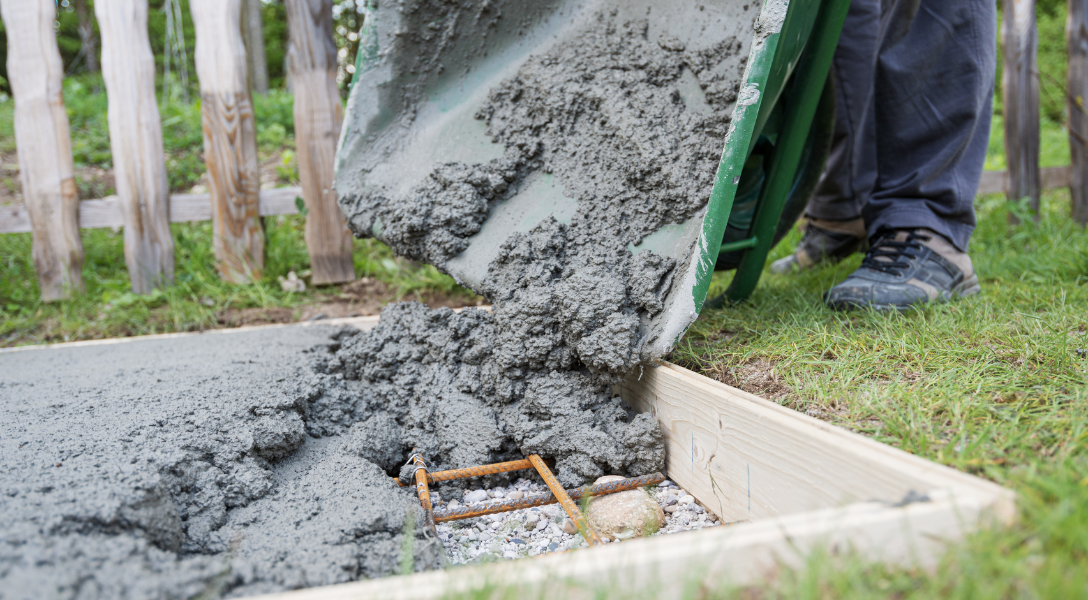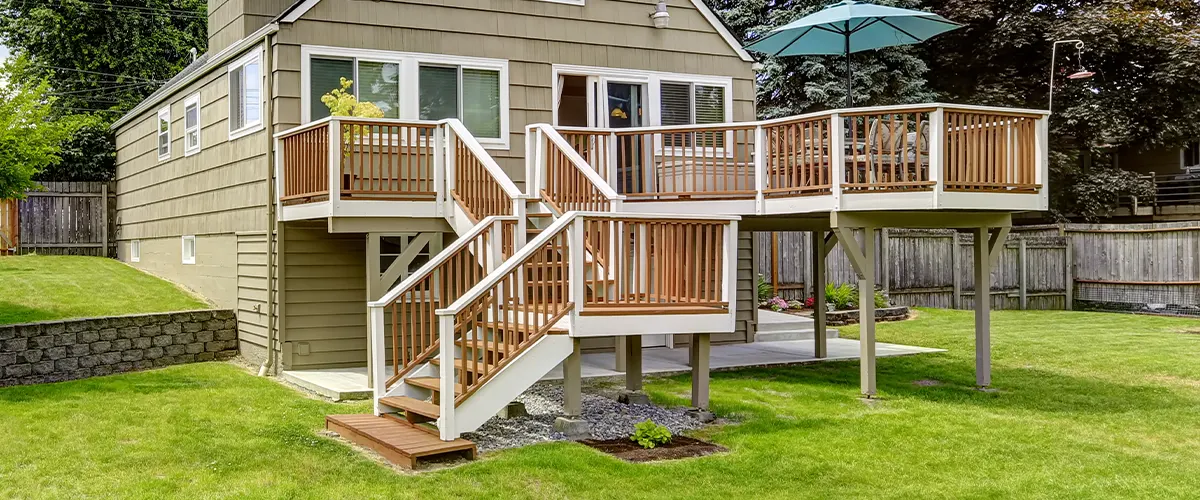Optimize the Life-span of Your Deck With Solid and reputable Grounds
In order to completely optimize the lifespan of your deck, it is vital to make certain that it is constructed on trustworthy and solid footings. These grounds form the structure of your deck, providing stability and assistance, and are often the difference in between a deck that lasts for years and one that calls for constant fixings. In this conversation, we will certainly discover the value of trustworthy footings, the different types of strong ground materials, appropriate installation methods, and exactly how to preserve and inspect your deck's grounds to avoid damage.
Significance of Reliable Footings
The significance of trusted grounds can not be overstated when it comes to making the most of the life expectancy of your deck. The footings function as the foundation upon which the whole structure rests, providing security and support. Without a solid ground, the deck is susceptible to changing, sinking, and even collapse, which can dramatically minimize its lifespan and posture safety dangers.

Picking the right kind of footing is also important. The most usual kinds consist of concrete grounds, helical piers, and sonotubes. Variables such as soil conditions, climate, and the size of the deck will figure out one of the most appropriate alternative. Employing a specialist to assess the dirt, layout the grounds, and ensure correct installment is highly recommended.
Spending in reliable footings may entail added cost and initiative upfront, but it is a beneficial investment that will certainly add to the long-term resilience and safety of your deck. By making sure a strong foundation, you can enjoy your deck for several years ahead, recognizing that it is built to withstand the test of time.
Types of Solid Footing Products
To ensure the stability and longevity of your deck, it is necessary to take into consideration the various kinds of solid ground materials available. The option of footing product is important as it supplies the required assistance and stability to stand up to the weight and lots of the deck framework.
One reliable and usual product utilized for deck footings is concrete. Concrete footings are sturdy and give outstanding security.
For locations with bad dirt conditions, such as expansive or loosened soils, a footing system that uses steel or composite piers might be chosen. Deck Footings. These piers are driven deep right into the ground to reach stable soil layers, ensuring the stability of the deck
In many cases, deck grounds can also be created using cured lumber. Nevertheless, it is essential to make certain that the lumber is correctly treated to resist rot and decay triggered by direct exposure to dampness and pests.
When selecting a ground product for your deck, it is important to think about elements such as soil conditions, environment, and regional building ordinance. Consulting with a specialist service provider or architectural engineer can assist identify one of the most appropriate ground material for your certain deck project.
Appropriate Installation Techniques for Footings
Thinking about the significance of ensuring stability and longevity for your deck, it is crucial to understand the appropriate installment methods for footings. The success of your deck project relies heavily on the integrity of its foundation, which is why complying with the correct installment strategies is essential.
Most importantly, it is required to identify the proper dimension and deepness of the footings based on the design and load needs of your deck. This information can be obtained from developing codes or via consultation with a structural engineer. As a general policy, footings should be at least 12 inches in size and expand listed below the frost line to stop moving or settling.
As soon as the dimensions are developed, the next step is excavation. Digging the holes for the grounds should be performed with accuracy, seeing to it they are deep enough and have a level bottom. Deck Footings. This will certainly offer a secure base for the footings
To better boost the stability of the footings, it is advised to use a concrete mix with a stamina of a minimum of 3,000 psi. This will certainly make certain the footings can withstand the a knockout post weight and pressures applied by the deck.
Throughout installment, it is important to keep the footings level and aligned properly. This can be achieved by utilizing a level and string lines to guide the positioning of each ground.
Keeping and Inspecting Your Deck's Grounds
Routine upkeep and extensive evaluations are important for making certain the long-term security and security of your deck's grounds. With time, footings can give in to tear and put on, weather, and soil movement, which can jeopardize their structural stability. To make the most of the lifespan of your deck's grounds, it is crucial to carry out a normal maintenance regimen and conduct complete examinations.

Additionally, it is essential to inspect grounds for any indicators of damage or deterioration. This consists of checking for splits, divides, or falling apart concrete, as well as any type of signs of motion or settlement. Any kind of problems must be resolved immediately to avoid further damages and make sure the security of the deck.
Moreover, it is suggested to evaluate the bordering dirt for any kind of indications of erosion or changing. Dirt activity can influence the stability of the footings, so it is very important to attend to any type of soil-related concerns quickly.
Indicators of Ground Damage and Exactly How to Address Them
Footing damage can posture serious threats to the security and security of your deck, making it important to promptly recognize and attend to any type of signs of damage. One of the most common indicators of footing damage is sinking or clearing up of the deck. This can occur as a result of dirt erosion, insufficient footings, or bad building and construction techniques. It is critical to take instant activity to stop additional damages if you notice that your deck is unequal or leaning. An additional sign of footing damages is fracturing or falling apart of the concrete grounds. This can be brought on by freeze-thaw cycles, too much wetness, or low quality concrete. If you observe any type of fractures or deterioration in the grounds, it is essential to have them inspected and repaired by a professional. Furthermore, if you notice any activity or moving of the deck, such as a deck that feels unsteady when walked on or wobbles when weight is applied, maybe an indicator of footing damage. In such cases, it is recommended to speak with a professional specialist or an architectural engineer to examine the extent of the damages and establish see this site the ideal program of action. Bear in mind, dealing with footing damage promptly can assist make certain the long-term stability and safety and security of your deck.
Final Thought
In verdict, ensuring the reliability and strength of grounds is crucial for taking full advantage of the life expectancy of your deck. By utilizing strong footing materials and effectively mounting them, you can stop damages and preserve the stability of your deck.
These grounds create the structure of your deck, supplying stability and support, and are often the distinction in between a deck that lasts for years and one that requires constant repairs. In this conversation, we will discover the value of trustworthy grounds, the different types of solid footing materials, correct setup methods, and how to keep and check your deck's footings to stop damage.Normal maintenance and comprehensive inspections are crucial for making sure the long-term security and security of your deck's footings. Bear in mind, dealing with ground damage promptly can aid guarantee the long-term security and safety of your deck.
By making use of strong ground materials and appropriately installing them, you can protect against damage and keep the stability of your deck.